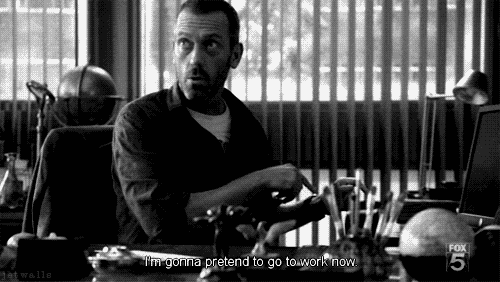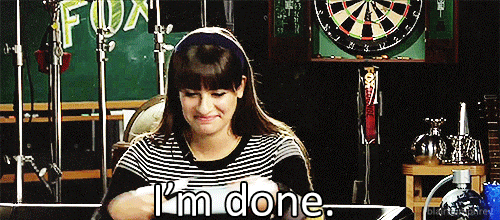You nailed your interview, got the job and found an apartment—now you need a car to get you to your new office every day!
Buying your first car is a daunting task. It’s a substantial investment, the process is notorious for being tedious and salesmen are known for trying to rip you off. While the make and model of the car you decide to buy is personal, here are some tips for every new-car buyer on how to make the process as painless and worthwhile as possible.
1. Review your finances
![]()
Before even stepping foot in a dealership, you should know where your finances stand. This means knowing your credit score and whether you’re pre-approved for financing.
Jeff Ostroff, founder and CEO of CarBuyingTips.com, says, “The biggest mistake car buyers make is heading out to buy a car without making sure they are pre-approved for financing and knowing their credit score.” He explains that being unfamiliar with or in denial of your financial situation leads to two things: Higher-than-advertised interest rates and manipulation by the salesman due to your ignorance of your own financial status.
As a new graduette, you may not have much of a credit history. Ostroff suggests you start establishing credit as soon as possible. “Start with a gas card and Target card, which appear to be pretty easy to get, and pay in full and on time every month,” he says.
If you’re paying a monthly rent, in some cases, you can have those payments included in your credit history; it’s not done automatically. Check with your landlord or register through sites like WilliamPaid.com, which has an official partnership with credit bureau Experian.
Be aware that if you have a lower credit score, your interest rates will be higher. Scores above 680 will give you the lowest interest rates and is the best situation to get a loan for a new car; a score below 680 but above 550 will get you a loan, but you’ll have to pay higher interest rates; and if your credit score is below 550, you can get a bad credit loan or, alternatively, skip loans altogether.
“Save up and pay cash… fees and finance charges kill you,” says former car salesman Buddy Huntsinger.
However, you might need a car immediately and won’t be able to pay in cash. Ultimately the way to decide what sort of financing you need to get your car will depend on your personal financial history, so make sure that you know your own credit score and history before moving forward with buying a car.
2. Research, research, research
![]()
Your research should begin with your credit score and finding out if you’re pre-approved for a loan, but it shouldn’t stop there. The best thing you can do when buying a car is to be well informed. Research the kind of car you want, the dealers in your area and competitive pricing so you can walk into the dealership prepared to negotiate a fair price.
“Car buyers should know how much they should be paying for the car before they even leave the house,” Ostroff says.
Research common scams and practices by car salesmen so that you don’t fall prey to them. And if you’re looking at a used car, examine its Vehicle History Report (VHR) carefully. A VHR can be obtained online for varying prices—you can purchase a basic VHR from the National Motor Vehicle Title Information System or pay extra to get a detailed report. VHRs provide you with a vehicle’s accident history, how many previous owners it has had, where it was manufactured and other data that gives you a deeper sense of the car’s condition. While you may get to a point where you want to finally seal the deal and get your new car, in the long run it’s worthwhile to do your research to make sure you’re getting a good deal.
Make sure to print out and bring all the research with you so that the seller knows you’re making an educated decision and that he or she won’t be able to manipulate you. “The majority of the time you can tell if the customer has done research and it benefits the customer,” Huntsinger says. “Sometimes you can’t tell until the end when the customer has adopted a take-no-prisoners negotiation strategy. They know what the last 7,000 customers have paid for the vehicle, and they want to pay the least amount.”
Knowing what others have paid for the same make and model can prevent paying more than you need to. Websites such as CarGurus and Kelley Blue Book allow you to compare car pricing trends in your area, and scouring classifieds and Craigslist can give you a sense of how private sellers are pricing cars. By researching the deals in your area and getting a sense for what the car goes for, you can end up paying much less than if you entered the process without any of that information.
3. Should you buy or lease?
![]()
If the number of cars to choose from wasn’t enough, there are also several ways to buy the car once you’ve figured out which car you want. You can buy a brand-new car from a dealership, buy a used car from a dealership, buy a used car from a private seller or lease a car.
Ostroff says that if you’re considering buying a new car, you should be able to put 20 percent down and pay the car off in 48 months. If you can’t put the initial 20 percent down on the new car, Ostroff explains that you’ll end up in financial trouble on your loan and will owe more than the car is worth when you go to trade it in.
“Too many people end up in six- or seven-year loans because they can’t afford the lower month terms,” Ostroff says. “This really means, in my opinion, that they cannot afford the car. So if you can’t pay it off in 48 months, don’t buy the car, and instead focus on a three-year used car, because they can be half the cost and have already dropped down the value depreciation curve.”
Leasing can seem like an appealing option with low monthly rates on brand-new cars; you’re only paying off part of the car, not the whole price. However, there are important things to consider about leasing. Leasing requires thinking ahead about 36 months, a typical lease length, as you cannot move out of state with a leased car and it is expensive to break a lease, Ostroff explains.
“If you lose your job, you are still on the hook for the lease, unlike a loan or used car, when you can just sell the car,” Ostroff says. “With a lease, you don’t own the car and cannot sell or trade it in.”
If you’re uncertain where you’ll be a few years down the road, a lease may not be the best option for you. Further, leases have restrictions on mileage, and the car must be kept in the best shape, so if you’re hard on cars or will be driving longer distances, consider that when you decide if you want to lease.
Finally, while leasing may seem the best option in the short term, when the lease is up, you return the car (with an exit fee) and cannot get any return on the money you paid. However, if you buy a car, once it’s paid off, it’s yours to keep, and you can get a return on your investment through trading in or selling the car when you decide to get a different one. While it may be tempting to get that beautiful new car on a lease, make sure to think hard about how leasing may affect you in the long term.
Kelsey Wasilewski, a 2013 graduate of Binghamton University, chose to buy a used car after graduating and couldn’t be happier. “The best thing I ever did for my finances after graduating was to listen to my dad and buy a used car for $1,800,” she says.
Kelsey says she’s able to go on road trips without worrying too much about mileage or condition. Plus, it’s allowed her to spend her hard-earned money elsewhere. “Not having a crazy high lease or car payments has allowed me to get a great apartment and start paying down my student loans pretty quickly, all while still putting away a lot in savings!” she says. “My advice? Buy used, and save the new car for when you are older!”
4. Look for discounts and deals
![]()
As part of your research, look for discounts—you can even get one for being an alumna of your college!
Erica Avesian, a 2013 graduate of the University of Michigan, recently bought her first car. “Figure out the best type of discount, whether it be a friends and family, employee or alumni discount,” she says.
Many schools offer alumni discounts, so be sure to consult your school’s alumni website to see what sort of deals they can provide for you. If you’re buying a car around the time you graduate, look for new graduate discounts.
“Follow all the rebates and college graduate promotions from the carmakers,” Ostroff says. “Many have $500 incentives for enrolled students or those about to graduate in addition to any normal consumer rebates that might be on your car.” Use your new status to save you money!
If don’t need a car urgently, try to buy one when you’re most likely to get the best deal. According to the United Services Automobile Association, there are different times of the year, month and even week when you can get the best deal! Avoid weekends if possible, and make your offer later in the day. Since your alma mater or dealerships in your area may offer discounts around graduation, if you can hold off until the end of the year, the influx of newer models combined with year-end quotas can get you some of the best deals.
5. Take it for a test-drive
![]()
Once you’ve done your research, it’s time to see the car in person. Erica recommends bringing a car-savvy friend along when you go to buy. Whether you’re buying new, buying used or leasing, make sure that you test-drive the car.
When you’re test-driving, leave the radio off so that you can hear any weird noises the car makes (but do make sure that the radio/CD player/AV system works, too!). Take note of everything you hear, and ask about those noises! This is especially important in used cars to make sure you’re not inheriting costly problems.
Pinpoint where the car’s blind spots are and make sure that you feel safe driving it. “When on the drive, ask to be taken on bumpy roads and parking lots,” Huntsinger says. “Take a long enough drive—20 minutes minimum—to verify your seats are comfortable. Is the steering wheel positioned comfortably? Seat belt ride on your neck?”
When looking at a car at a dealership, Huntsinger advises that you make sure the car you test-drive has the features and extras you plan to buy, because “test-driving a base model is going to drive differently than a heavier, fully equipped model.” A car is too big of an investment to have buyer’s remorse over—use the test-drive to make sure that you’ll be happy in the car for the entire time you have it!
6. Negotiate
When you’ve found the car, it’s time to negotiate. This is where knowing what comparable cars are selling for will work in your favor!
Stay calm but stick to your guns and try to come to a deal quickly. Enter the negotiation with a price that is both fair to you and still gives the salesman a fair commission so that you can confidently stick to a price that is fair to everyone.
Finally, if the salesman is not giving you a fair price, opt to walk out and find a deal elsewhere—you did your research, and you deserve the best price!
“As a car salesman, you hope rich, uninformed car buyers will agree to everything you present,” Huntsinger says. “This mistake can really increase the cost of a car and cause the customer to feel taken.”
![]()
If you do your research, you can get a great deal on your first car. And after you finally get it, take your new (or new-to-you!) car for a celebratory drive!







































































































































































































